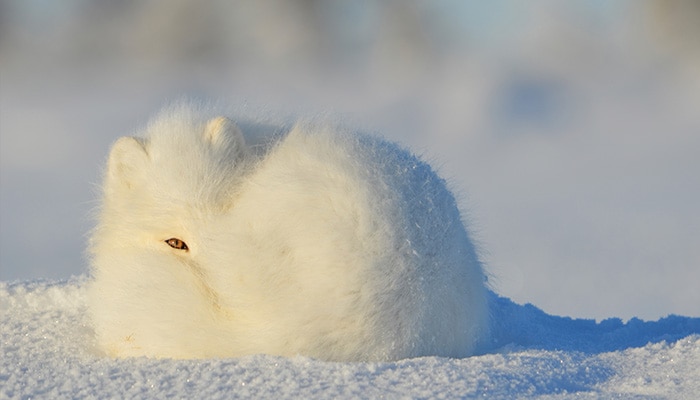While we believe that the books and resources recommended may be of value to you, keep in mind that these are suggestions only and you must do your own due diligence to determine whether the materials are appropriate and suitable for your use. PNC has no sponsorship or endorsement agreement with the authors or publishers of the materials listed.
WINTER

Winter Camouflage
Children will learn about camouflage.

Lesson Objective
Children will explore camouflage and how some animals change to blend into their winter environment.
ScienceArtMusic
What You'll Need
- Summer pictures of an arctic fox and snowshoe hare (see Lesson Tips)
- Winter pictures of an arctic fox and snowshoe hare (see Lesson Tips)
- Rabbit patterns – 1 per child (see Lesson Tips)
- Pencils – 1 per child
- Brown construction paper – 1 sheet per child
- White construction paper – 1 sheet per child
- Child-safety scissors – 1 per child
- Snow on the ground (see Lesson Tips)
What To Do
- Display the pictures of the fox and snowshoe hare (see Guiding Student Inquiry).
- Discuss camouflage with the children (see Did You Know?).
- Distribute rabbit patterns, construction paper, and pencils to the children.
- Have the children trace the rabbit pattern on each piece of construction paper and cut them out.
- Collect the brown and the white rabbits. With snow on the ground, place the cut out rabbits, both brown and white, on the ground.
- Take the children outside and instruct them to find the rabbits.
- Return to the classroom once all the rabbits have been found.
- Discuss which rabbits were easier to find—the brown ones or the white ones (see Did You Know?).
Resources
Home School Resources
Home educators: use these printable lesson PDFs to teach this lesson to your home schoolers. They're available in English and Spanish.
Content Provided By
Common Core State Standards Initiative – These lessons are aligned with the Common Core State Standards ("CCSS"). The CCSS provide a consistent, clear understanding of the concepts and skills children are expected to learn and guide teachers to provide their students with opportunities to gain these important skills and foundational knowledge [1]. Visit the CCSS


